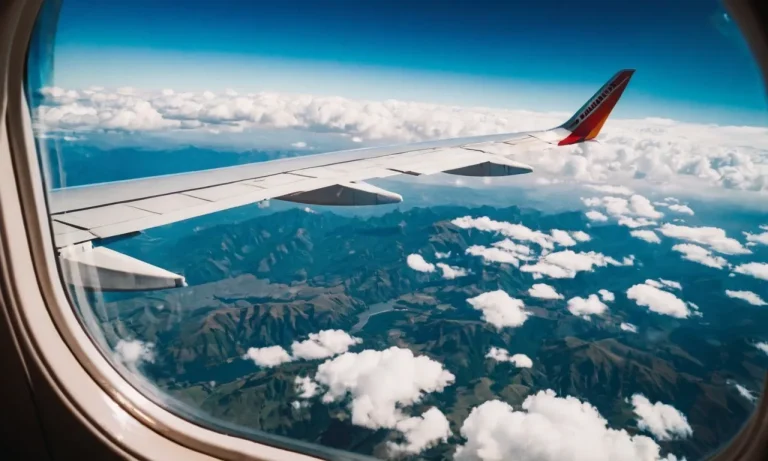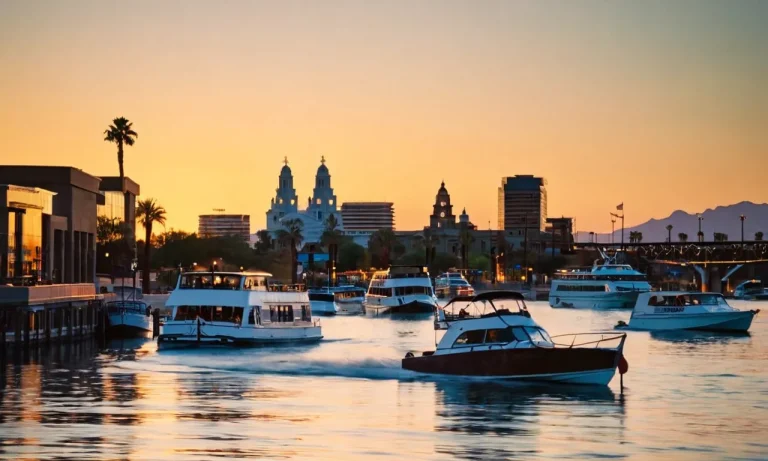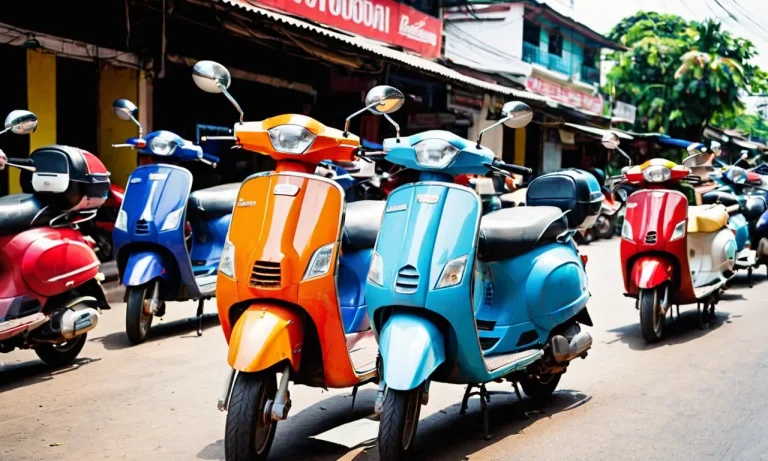How Long Can A Plane Stay In The Air?
Have you ever wondered just how long a commercial airplane can stay airborne? With ultra long-haul flights now stretching close to 20 hours, the limits of aviation fuel capacity continue to be pushed. If you’re short on time, here’s a quick answer: most commercial jets can fly anywhere from 5 to 16 hours before needing to refuel.
In this comprehensive guide, we’ll explore all aspects related to in-flight endurance limits. From aircraft fuel storage configurations and flight regulations, to record-setting nonstop journeys and innovations aiming to extend airborne longevity even further.
Key Factors That Determine How Long a Plane Can Fly
Aircraft size and type
One of the key factors that determine how long a plane can stay in the air is its size and type. Larger planes, such as commercial airliners, are designed to carry more fuel and have a greater fuel efficiency compared to smaller aircraft.
This allows them to fly for longer durations without the need for frequent refueling. Additionally, the type of aircraft also plays a role. Modern airplanes are equipped with advanced technologies that optimize fuel consumption and enhance flight performance, enabling them to stay airborne for extended periods.
Fuel capacity
The fuel capacity of an aircraft is another crucial factor that affects its flight duration. The larger the fuel tanks, the longer the plane can stay in the air. Commercial airliners, for example, have substantial fuel capacity, allowing them to cover long distances without needing to land for refueling.
The fuel efficiency of the aircraft also plays a significant role. Newer planes are designed to be more fuel-efficient, maximizing the use of each gallon of fuel and extending the flight range.
Flight speed and conditions
The speed at which a plane flies and the prevailing flight conditions also impact its flight duration. Flying at higher speeds consumes more fuel, reducing the aircraft’s endurance. However, flying at slower speeds can extend the flight time but may not be practical for long-distance travel.
Additionally, weather conditions like headwinds or tailwinds can affect the plane’s speed and fuel consumption. Tailwinds can provide a boost to the aircraft’s speed and efficiency, allowing it to stay in the air for a longer time.
On the other hand, headwinds can slow down the plane and increase fuel consumption, potentially shortening the flight duration.
For more detailed information on aircraft performance and fuel efficiency, you can visit websites like Boeing.com or Airbus.com.
Average Flight Times by Aircraft
Narrow-body jets
Narrow-body jets, also known as single-aisle jets, are commonly used for short to medium-haul flights. They are designed to accommodate around 150 to 200 passengers. The average flight time for a narrow-body jet can vary depending on several factors such as distance, weather conditions, and air traffic.
On average, these jets can stay in the air for about 3 to 5 hours without refueling.
Wide-body jets
Wide-body jets, also known as twin-aisle jets, are larger and can carry a significantly higher number of passengers compared to narrow-body jets. These aircraft are often used for long-haul flights, including international routes.
The average flight time for a wide-body jet is longer than that of a narrow-body jet. These jets can typically stay in the air for about 10 to 16 hours without refueling.
Regional turboprops
Regional turboprops are smaller aircraft primarily used for short-haul flights, often connecting smaller airports and regional destinations. These aircraft have propellers and are known for their efficiency in short-distance travel.
The average flight time for a regional turboprop can range from 1 to 3 hours.
Private jets
Private jets, also known as business jets, are typically owned or chartered by individuals or companies for private travel. These jets offer luxurious amenities and personalized service. The flight time for private jets can vary greatly depending on the specific model and its range capabilities.
Some private jets can stay in the air for up to 16 hours without refueling, allowing for non-stop long-distance travel.
It is important to note that these average flight times are approximate and can vary based on several factors such as aircraft weight, fuel capacity, weather conditions, and flight regulations. Additionally, advancements in aircraft technology and fuel efficiency continue to impact the range and flight times of various aircraft.
For more information about aircraft performance and flight times, you can visit www.boeing.com or www.airbus.com.
Longest Nonstop Commercial Flights
Have you ever wondered how long a plane can stay in the air without making a stop? Well, the aviation industry has seen some remarkable advancements in recent years, allowing planes to cover vast distances without refueling.
Let’s take a look at some of the longest nonstop commercial flights in the world!
1. Singapore Airlines – Singapore to Newark
Singapore Airlines currently holds the record for the longest nonstop commercial flight in the world. Their Airbus A350-900ULR aircraft flies between Singapore’s Changi Airport and Newark Liberty International Airport in New Jersey, covering a distance of approximately 9,534 miles.
The flight takes around 18 hours and 45 minutes, making it a true test of endurance for both passengers and crew.
2. Qantas – Perth to London
Qantas, the flag carrier airline of Australia, operates a nonstop flight between Perth and London. This route covers a distance of approximately 9,009 miles and takes around 17 hours and 20 minutes. The Boeing 787-9 Dreamliner used for this flight is equipped with advanced technology to enhance passenger comfort during the long journey.
3. Emirates – Dubai to Auckland
Emirates operates one of the longest nonstop flights between Dubai and Auckland, New Zealand. The route covers a distance of approximately 8,824 miles and takes around 17 hours and 5 minutes. Passengers on this flight get to experience the luxury and world-class service that Emirates is known for.
4. United Airlines – Los Angeles to Singapore
United Airlines offers a nonstop flight between Los Angeles and Singapore, covering a distance of approximately 8,770 miles. The flight duration is around 17 hours and 55 minutes, making it one of the longest journeys in the world.
Passengers can enjoy a range of amenities and entertainment options to make their flight more enjoyable.
These long-haul nonstop flights have revolutionized the way people travel, connecting distant parts of the world in a single journey. Passengers can now reach their destinations faster and more conveniently, saving them valuable time.
For more information on these flights and other aviation-related topics, you can visit Singapore Airlines, Qantas, Emirates, and United Airlines official websites.
Refueling and Emergency Landings
When it comes to how long a plane can stay in the air, refueling and emergency landings play a crucial role. Let’s take a closer look at regulations and safety margins, as well as the in-flight refueling capabilities.
Regulations and Safety Margins
Aviation authorities around the world have strict regulations in place to ensure the safety of passengers and crew. These regulations dictate that planes must carry enough fuel to complete their planned journey, plus a reserve amount for unexpected circumstances.
The exact amount of fuel required depends on various factors, such as the type of aircraft, its weight, weather conditions, and the length of the flight. Safety margins are also considered to account for any deviations from the original flight plan or unforeseen delays.
Pilots and airlines adhere to these regulations to ensure that the plane always has enough fuel to reach its destination or an alternative airport in case of an emergency. This allows for a safe and efficient operation of flights.
In-flight Refueling Capabilities
In certain circumstances, planes have the capability to refuel while in the air. This is commonly used for long-haul flights or military operations where the aircraft needs to stay airborne for extended periods.
In-flight refueling involves a tanker aircraft, which carries extra fuel and transfers it to the aircraft in need. This process is carefully coordinated and executed to ensure the safety of both aircraft involved.
While commercial airliners do not typically have in-flight refueling capabilities, some military planes and specialized aircraft, such as aerial tankers, are equipped for this purpose. This allows them to extend their flight time and complete their missions without the need for frequent landings.
It’s important to note that in-flight refueling is not a common practice for commercial flights, as it involves logistical challenges, safety considerations, and added costs. However, it is a valuable capability in specific situations where extended flight times are necessary.
For more information on aviation regulations and in-flight refueling capabilities, you can visit the Federal Aviation Administration or the International Air Transport Association websites.
Ongoing Innovations and Future Possibilities
As technology continues to advance, the aviation industry is constantly seeking new ways to improve the efficiency and sustainability of air travel. In this quest, several ongoing innovations and future possibilities have emerged, promising to revolutionize the way planes stay in the air.
Lighter, more efficient materials
One area of innovation focuses on the development of lighter and more efficient materials for aircraft construction. By utilizing advanced composites and alloys, engineers are able to reduce the weight of airplanes, resulting in improved fuel efficiency and longer flight durations.
For example, carbon fiber-reinforced polymers (CFRP) are increasingly being used in the construction of aircraft, offering a high strength-to-weight ratio and enhanced resistance to fatigue. This not only allows planes to stay in the air longer but also reduces their environmental impact by minimizing fuel consumption.
Alternative aviation fuels
The search for alternative aviation fuels is another significant innovation in the aviation industry. Traditional jet fuels, derived from fossil fuels, contribute to greenhouse gas emissions and climate change.
As a result, researchers are exploring sustainable alternatives such as biofuels and hydrogen. Biofuels, made from renewable sources like algae or plant waste, have shown promising results in reducing carbon emissions.
Additionally, hydrogen-powered aircraft have the potential to significantly decrease environmental impact, as they only produce water vapor as a byproduct. While these alternative fuels are still in the experimental stage, their development holds great promise for the future of aviation.
New aircraft configurations
Advancements in aircraft configurations are also being explored to improve flight efficiency and extend flight durations. One such concept is the blended wing body (BWB) design, which combines the wings and fuselage into a single, seamless structure.
This configuration offers several benefits, including reduced drag, increased fuel efficiency, and greater passenger capacity. Additionally, the use of distributed electric propulsion (DEP) systems, where multiple smaller electric motors power the aircraft, has the potential to improve efficiency and reduce emissions.
These innovative aircraft configurations not only have the potential to extend the time planes can stay in the air but also offer a more sustainable future for air travel.
Conclusion
While 11-16 hours is still the norm for most passenger flights, ongoing innovations in fuel efficiency and aircraft design continue to push the boundaries. Ultra long-haul journeys keep getting longer thanks to careful planning around fuel capacities, reserve requirements, and favorable winds.
Next time you embark on a lengthy nonstop flight, consider the intricate calculations happening behind-the-scenes to bring you safely to your destination in one go.








